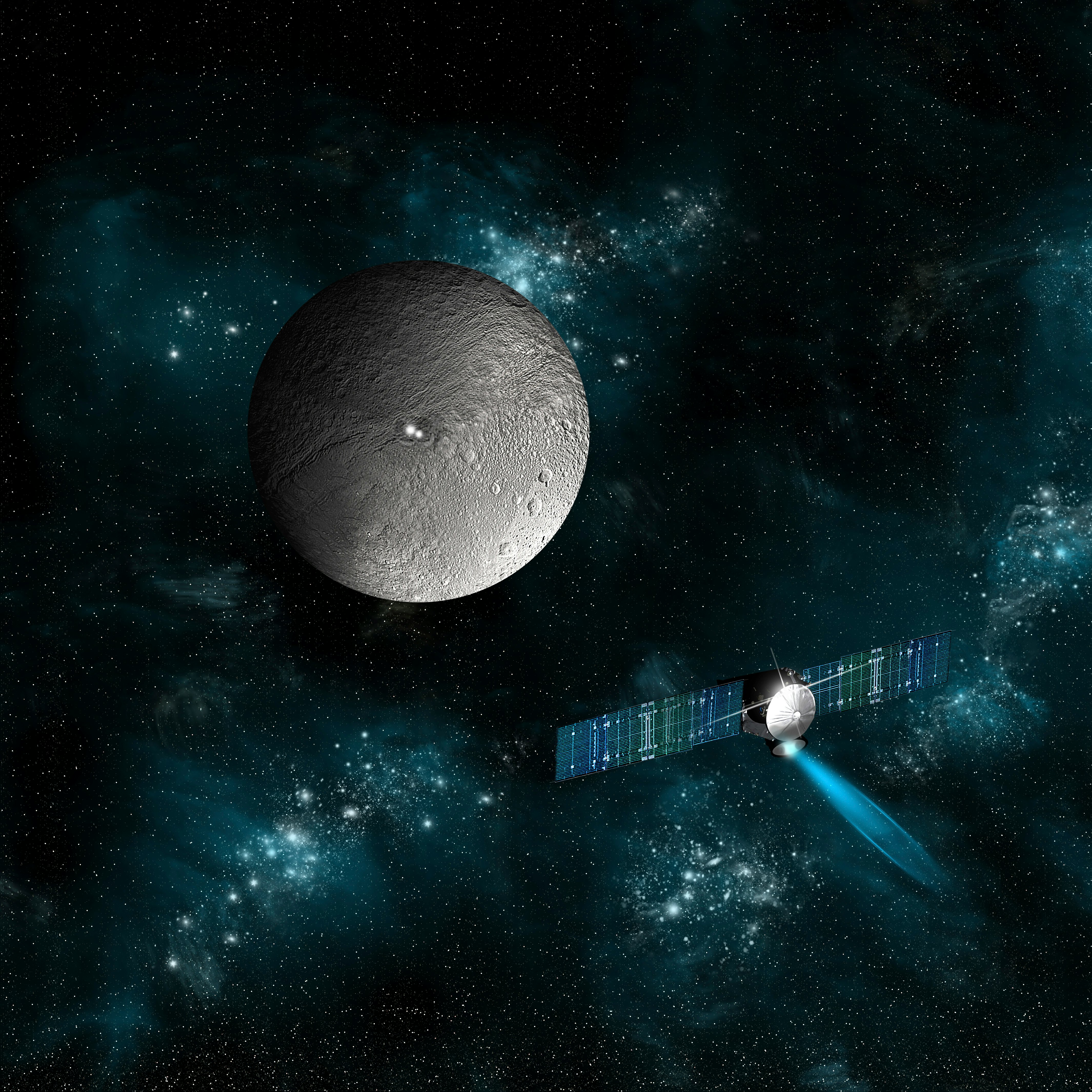
A hidden ocean on dwarf planet Ceres may have churned up some of the ingredients for life relatively recently.
The largest object in our Solar System’s asteroid belt, dwarf planet Ceres, hides small underground lakes of salt water ocean beneath an icy surface crusted with salts and stained with hydrocarbons. Around one of the dwarf planet’s largest craters, Ertunet Crater, a layer of organic chemicals (called aliphatics) covers hundreds of square miles. And those materials must have gotten there fairly recently, because a recent study found that aliphatic compounds break down very quickly under the constant bombardment of radiation in deep space. That suggests that these organic molecules formed in Ceres’s underground ocean within the last 10 million years or so.
Maria Cristina De Sanctis, a planetary scientist at Italy’s National Institute for Astrophysics, and her colleagues published their work in the journal Science Advances.

Is Ceres the Next Icy Astrobiology Hotspot?
De Sanctis and her colleagues mixed up some homemade Ceres sediment in their lab, basing their recipe on data from NASA’s Dawn mission, which visited the dwarf planet in 2012. The mix included a hearty helping of aliphatic organics, a type of hydrocarbon that exists across hundreds of miles on the ground around Ceres’s Ertunet Crater. To find out how long those organic molecules might have been lying on the surface, De Sanctis and her colleagues bombarded their samples with powerful ultraviolet radiation and fast-moving ions (electrically-charged atoms), to simulate the kind of so-called “space weathering” that can break down organic molecules.
It turns out that the molecular bonds that hold aliphatic compounds together aren’t very sturdy; radiation breaks them very quickly. Large swaths of aliphatic compounds shouldn’t last very long on the surface of Ceres, even if they’re mixed up with something like clay, which provides a little protection from UV radiation. For the land around Ertunet Crater to contain so much of this type of hydrocarbon, those huge deposits on the surface must have gotten there within the last 10 million years.
And since most simulations agree that these organic molecules probably formed deep inside Ceres, instead of being delivered by comets or smaller asteroids, that means the dwarf planet’s geology was mixing up organic molecules pretty recently in its past.
Reasons to Take a Closer Look
Ceres is the largest object in the asteroid belt — big enough to be considered a dwarf planet like Pluto instead of just a big asteroid — but the Dawn mission revealed that size isn’t the only interesting thing about Ceres. It’s a complex little world which once boasted a global ocean of salt water beneath its crust, similar to icy moons Europa, Enceladus, and Ganymede. Pockets of that ocean still survive, unfrozen, today, and Ceres’s surface is scattered with frozen water, salts, and all sorts of organic molecules.
Deep beneath the surface, previous studies have hinted that chemical reactions between rock and salt water may have released enough energy to create little pockets of habitability.
Based on how recently Ertunet Crater’s huge patch of hydrocarbons may have reached the surface, De Sanctis and her colleagues say it’s likely that chemistry in Ceres’s ocean produced them — and other organic compounds — in huge quantities in the not-so-distant geological past.
“Therefore, the organic compounds found at the Ertunet Crater might have evolved over the life span of Ceres’s deep ocean, lasting at least a few hundred million years,” write De Sanctis and her colleagues in their recent paper. That makes Ceres, and the area around Ertunet crater in particular, yet another very interesting place to search for potential life — or at least a potentially livable environment — on a world that seemed inhospitable.
De Sanctis and her colleagues suggest that the organic compounds lying on the surface at Ertunet may have oozed upward toward the surface through cracks in Ceres’s icy crust, which probably formed during the huge meteor impact that formed Ertunet in the first place. Since then, smaller impacts and landslides have revealed more of that buried reservoir of aliphatic compounds.
It’s like having a sample of the interesting, potentially life-giving chemistry of Ceres’s hidden ocean laid on the surface just waiting to be studied, and De Sanctis and her colleagues are all for it.
“This makes the region a preferred site for a future in situ or sample return mission to Ceres,” they write. No such mission is currently planned, and it’s been more than a decade since Dawn’s visit, but it’s an intriguing prospect.







